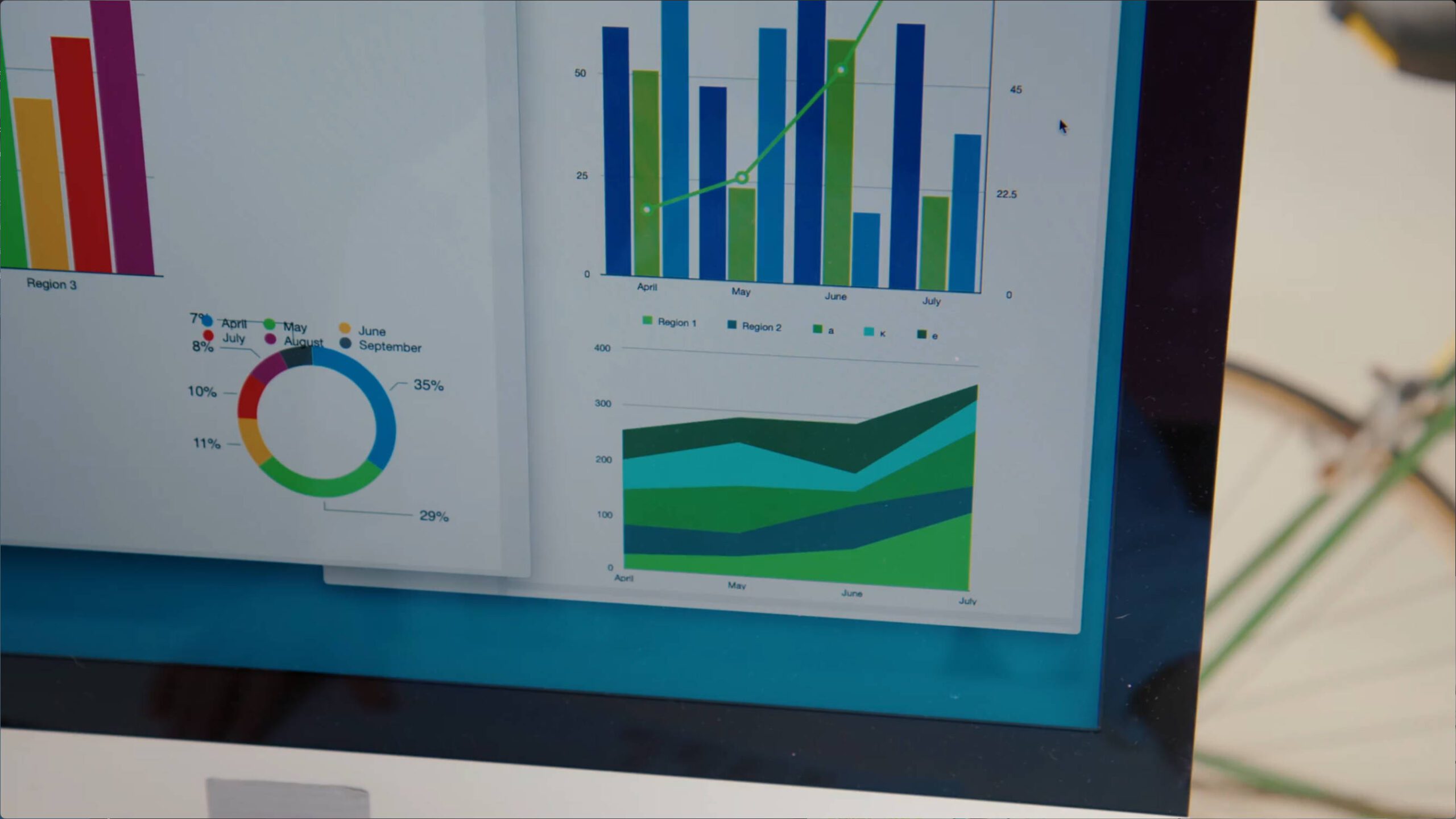In today’s digital landscape, video content has become an integral part of marketing strategies for businesses across industries. However, to truly harness the power of video marketing, organisations need to measure their success and refine their strategies based on data-driven insights. This is where video analytics plays a crucial role.
Introduction
The success of video marketing campaigns relies heavily on the ability to measure and analyse the performance of videos. Video analytics provides the necessary tools and metrics to evaluate the effectiveness of video content, understand audience behaviour, and optimise marketing strategies accordingly. By utilising video analytics, businesses can gain valuable insights and make data-backed decisions to enhance their video marketing efforts.

Understanding Video Analytics
Video analytics refers to the process of collecting, measuring, and analysing data related to the consumption and engagement of videos. It helps marketers gain a deeper understanding of how viewers interact with their video content and provides actionable insights for improving performance. Imagine being able to analyse every frame of your product’s promotional video to understand precisely how it resonates with your audience. By doing this, you’re not just shooting in the dark; you’re making informed decisions based on real data.
Key metrics and measurements in video analytics include view count, watch time, audience retention, drop-off rates, interaction and engagement metrics, and conversion tracking. These metrics provide valuable information about the performance of videos, the level of audience engagement, and the effectiveness of marketing efforts.
Measuring Video Engagement
To determine the success of video campaigns, it is essential to measure the level of engagement they generate. View count and watch time are basic metrics that indicate the popularity and reach of a video. However, they only scratch the surface of what video analytics can offer.
Audience retention and drop-off rates are critical metrics that help evaluate the effectiveness of video content. By analysing these metrics, marketers can identify the points at which viewers lose interest or disengage, allowing them to make necessary adjustments to capture and retain audience attention.
Interaction and engagement metrics, such as likes, comments, shares, and click-through rates, provide insights into how viewers actively engage with videos. High engagement levels indicate that your content is resonating with viewers, a key marker of success.
Analysing Audience Behaviour
Video analytics goes beyond surface-level metrics and delves into understanding the behaviour and characteristics of the audience. Demographic data, such as age, gender, location, and interests, can provide valuable insights into the target audience and help tailor video content to specific segments.
Heatmaps and click-through rates offer visual representations of audience engagement, highlighting the areas of a video that receive the most attention or interaction. This information can inform content creators about what elements are capturing audience interest and help optimise future videos.
Conversion tracking and goal completion metrics enable businesses to measure the impact of videos on their marketing funnels. By tracking conversions and goals, marketers can identify how videos contribute to lead generation, sales, or other desired outcomes.
Optimising Video Content
Video analytics plays a vital role in optimising video content for maximum impact. A/B testing and experimentation allow marketers to test different variations of videos and identify the most effective elements, such as video length, storytelling techniques, or calls to action. By analysing the performance of different versions, businesses can refine their video content and enhance its effectiveness.
Content optimisation based on video analytics involves using data-driven insights to make informed decisions about video creation and distribution. By understanding what resonates with the audience, marketers can tailor their content to meet their preferences, leading to increased engagement and better results.
Refining Video Marketing Strategies
Video analytics provides marketers with the necessary tools to refine their video marketing strategies continuously. By analysing patterns in video performance data, businesses can identify what works and what doesn’t, allowing them to make iterative improvements. Video analytics can also help identify trends in viewer behaviour. This can guide you in creating content that appeals to your target audience, thereby refining your video content strategy.
This iterative approach to video marketing ensures that strategies evolve with changing audience preferences and market dynamics. By staying responsive and adaptable, businesses can maintain a competitive edge and drive better results from their video campaigns.
Integrating Video Analytics with SEO
Video analytics and search engine optimisation (SEO) go hand in hand when it comes to enhancing video visibility and search rankings. Leveraging keywords and metadata in video titles, descriptions, and tags can significantly impact discoverability and search rankings.
By understanding how viewers find videos through search queries and optimising video content accordingly, businesses can increase their organic reach and drive more targeted traffic to their websites. Video analytics helps identify keywords that resonate with the target audience and enables businesses to fine-tune their video SEO strategies for optimal results.
The Future of Video Analytics
As technology continues to advance, video analytics is poised to become even more powerful and insightful. Emerging technologies such as artificial intelligence and machine learning are already being integrated into video analytics platforms, enabling predictive analytics and personalised experiences.
Predictive analytics can help businesses anticipate viewer behavior and preferences, allowing them to create more targeted and engaging video content. Personalised experiences, based on individual viewer data and preferences, can enhance engagement and build stronger connections with the audience.
The future of video analytics holds the promise of unlocking deeper insights into audience behavior, providing real-time analytics, and enabling more advanced measurement capabilities. As video continues to dominate the digital landscape, leveraging video analytics will be crucial for businesses looking to stay ahead and maximise their video marketing success.
Conclusion
Video analytics is an essential tool for businesses seeking to measure the success of their video marketing efforts and refine their strategies. By understanding audience behavior, measuring engagement metrics, and optimising video content based on data-driven insights, businesses can drive better results and achieve their marketing goals.
With the ability to analyse video performance, make informed decisions, and iterate based on data, organisations can continuously improve their video marketing strategies and stay competitive in a rapidly evolving digital landscape.
FAQs
1. How do you measure success with video analytics?
Success in Video Analytics is typically measured using viewership and engagement metrics, including the number of views, unique views, play rate, watch time, share rate, comments, likes, and dislikes.
2. What are the key metrics to focus on when analysing video performance?
Key metrics for video performance analysis include view count, watch time, audience retention, drop-off rates, interaction and engagement metrics, and conversion tracking.
3. How can A/B testing contribute to optimising video content?
A/B testing allows marketers to experiment with different variations of videos and identify the most effective elements. By analysing the performance of different versions, businesses can refine their video content and enhance its effectiveness.
4. What role does video analytics play in search engine optimisation (SEO)?
Video analytics helps identify keywords and optimise video content to enhance video visibility and search rankings. By understanding how viewers find videos through search queries, businesses can increase their organic reach and drive targeted traffic to their websites.
5. What advancements can we expect in video analytics in the future?
The future of video analytics holds the promise of emerging technologies like artificial intelligence and machine learning, enabling predictive analytics and personalised experiences. These advancements will provide deeper insights into audience behaviour and more advanced measurement capabilities.





